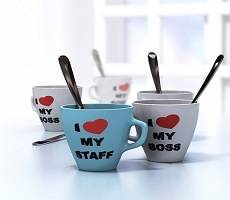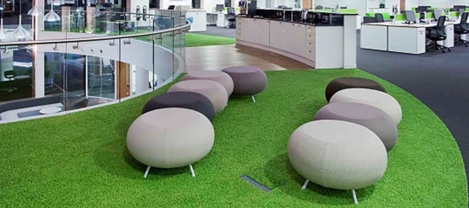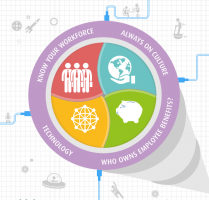October 22, 2015
Shrinking Asian workplace density could impair business performance 0
 Workplace static density, i.e. the space per sq. ft. per workstation, has halved in many Asian markets over the last decade and in many parts of Asia, this has already reached a point where further reductions will impact productivity, performance and retention. In Hong Kong, India and China, workplace space has shrunk from 100 sq. ft. per desk to 50-60 sq. ft. per desk. This figure is nearly half that of Europe and the US, where density norms are around 150-200 sq. ft. per desk. Elsewhere, in Australia and New Zealand, standards remain more generous at around 90-150 sq. ft. per desk. CBRE’s recent report, Space Utilization: The Next Frontier, looks at how organizations across the region are now under pressure to drive down costs by increasing their workplace ‘static density’ and suggests ways in which companies can use workplace density and utilization data to drive efficiency and business performance.
Workplace static density, i.e. the space per sq. ft. per workstation, has halved in many Asian markets over the last decade and in many parts of Asia, this has already reached a point where further reductions will impact productivity, performance and retention. In Hong Kong, India and China, workplace space has shrunk from 100 sq. ft. per desk to 50-60 sq. ft. per desk. This figure is nearly half that of Europe and the US, where density norms are around 150-200 sq. ft. per desk. Elsewhere, in Australia and New Zealand, standards remain more generous at around 90-150 sq. ft. per desk. CBRE’s recent report, Space Utilization: The Next Frontier, looks at how organizations across the region are now under pressure to drive down costs by increasing their workplace ‘static density’ and suggests ways in which companies can use workplace density and utilization data to drive efficiency and business performance.




































September 18, 2015
Majority of workers go into the workplace when they should be off sick 0
by Sara Bean • Comment, News, Wellbeing, Workplace
Debates around presenteeism tend to revolve around staff checking their emails while on holiday, but another potentially more destructive behaviour is that of the worker who reckons they’re so indispensable they insist on coming into the workplace when they’re ill. In a recent survey, 89 percent of workers said they had gone into work when they were not well, which is why it is hardly surprising that almost three quarters (71 percent) of employees have reported catching an illness from a sick colleague. According to the research by Canada Life, almost a third (32 percent) said their workload was too great for them to take time off for illness, and 80 percent would not take time off for stress-related illnesses. Employees were also worried about being perceived as lazy (13 percent), inconsiderate (10 percent) and weak (10 percent) if they took time off for a short-term illness.
More →